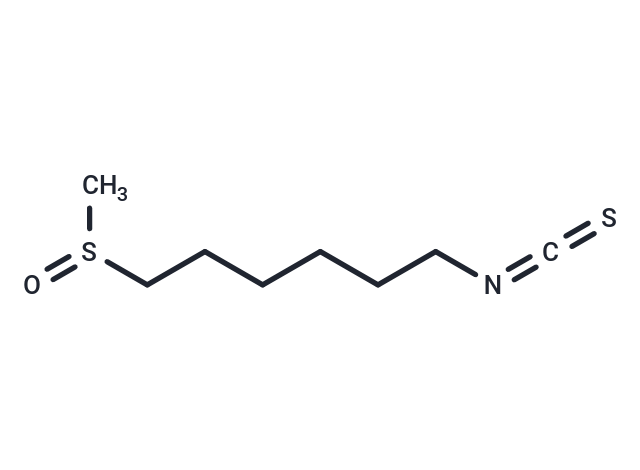Shopping Cart
- Remove All
 Your shopping cart is currently empty
Your shopping cart is currently empty
Hesperin (6-MSITC), a flavonoid isolated from orange peel, is a circadian decapping enzyme in plants, inhibiting lipid accumulation and production of reactive oxygen and nitrogen species in 3T3-L1 and RAW264.7 cells.

| Pack Size | Price | Availability | Quantity |
|---|---|---|---|
| 1 mg(48.70 mM * 100 μL in Ethanol) | $127 | In Stock |
| Description | Hesperin (6-MSITC), a flavonoid isolated from orange peel, is a circadian decapping enzyme in plants, inhibiting lipid accumulation and production of reactive oxygen and nitrogen species in 3T3-L1 and RAW264.7 cells. |
| In vitro | b>METHODS: HUVEC cells were stimulated with TNF-a or thrombin in the presence of Hesperin (0.03, 0.1, 0.3, 1 µg/ml, 4 hours). The effect of Hesperin on VWF release induced by TNF-a and thrombin was studied. RESULTS: Hesperin slightly increased TNF-a-induced TF activity, but at 1 lg/mL (4.88 μM), Hesperin reduced TNF-a- or thrombin-induced TF activity; Hesperin did not change the TF activity of unstimulated HUVECs; indicating that TF activity is inversely proportional to the concentration of Hesperin. [2] |
| In vivo | b>METHODS: Wild-type and Nrf2-deficient mice were fed the following diets for 12 weeks: 1) control diet, 2) high-fat diet (HFD), 3) HFD plus hesperin (10 mg/kg, ip, daily), 4) HFD for 6 weeks followed by HFD supplemented with iron for 6 weeks (HFD/iron), and 5) HFD/iron plus hesperin; to investigate whether hesperin could improve hepatic steatosis and iron accumulation. RESULTS: HFD increased hepatic triglycerides in both genotypes and Hesperi; hesperin suppressed the increase in hepatic triglycerides in wild-type mice but did not reduce triglycerides in Nrf2-deficient mice; hesperin did not block hepatic iron accumulation in either genotype. [1] |
| Synonyms | 6-MSITC, 6MSITC, 6 MSITC |
| Molecular Weight | 205.34 |
| Formula | C8H15NOS2 |
| Cas No. | 4430-35-7 |
| Smiles | O=S(C)CCCCCCN=C=S |
| Relative Density. | 1.12 g/cm3 (Predicted) |
| Storage | store at low temperature | Powder: -20°C for 3 years | In solvent: -80°C for 1 year | Shipping with blue ice/Shipping at ambient temperature. | |||||||||||||||||||||||||||||||||||
| Solubility Information | DMSO: 25 mg/mL (121.75 mM), Sonication is recommended. | |||||||||||||||||||||||||||||||||||
Solution Preparation Table | ||||||||||||||||||||||||||||||||||||
DMSO
| ||||||||||||||||||||||||||||||||||||

Copyright © 2015-2025 TargetMol Chemicals Inc. All Rights Reserved.